- Free Shipping and 100 days free returns.
The Viking Age, from the late 8th century to the early 11th century, marks a period of significant expansion and exploration by Scandinavian seafarers. Known for their seafaring prowess, the Vikings traveled far and wide, from the British Isles to the shores of North America. This era is often characterized by the Norsemen’s raiding, trading, and settlement activities, which left a lasting impact on the regions they touched.
In Viking axe society, weapons were more than just tools of war. They were symbols of status, power, and honor. A warrior’s weapons are an extension of their identity, often buried with them to signify their prowess and preparation for the afterlife. Among these weapons, the axe holds a special place due to its versatility and symbolic importance.
The axe was one of the most popular weapons of the Viking Age, known for its practical use in battle and everyday life. Unlike other weapons, the Best Viking axe was accessible to all classes of Viking society, making it a common sight in both war and domestic tasks. Its design evolved, but its importance in the Viking world remained constant.
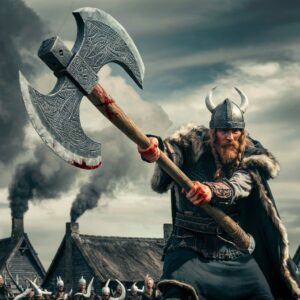
The Viking Age began around 793 AD with the infamous raid on Lindisfarne Monastery in England and continued until around 1066 AD with the Battle of Stamford Bridge. This period was marked by numerous raids, explorations, and settlements in Europe, North America, and even parts of Asia.
Viking society was hierarchical, with a king or chieftain at the top, followed by nobles, freedmen, and serfs (slaves). Warriors held a prominent position, as their skills in warfare were essential to the defense of their communities and the expansion of their territories. Warrior culture was deeply rooted, and fighting skills were highly respected.
Viking raids were swift and brutal, often targeting monasteries and coastal settlements. These raids were not only to take but also to acquire land and resources. In Viking times, warfare depended heavily on speed, surprise, and the effectiveness of their weapons, with the axe being a key tool in their arsenal.
The bearded axe, or “skeggox,” is distinguished by its elongated lower blade, which forms a hook-like “beard.” This design allowed for greater versatility in use, from cutting and carving to hooking and pulling.
In combat, the bearded axe was highly effective for hooking an opponent’s shield or weapon, creating openings for attack. Its extended blade was also practical for woodcutting and other domestic chores, making it a multipurpose tool.
The Dane axe, known for its large, broad blade and long handle, was primarily used as a two-handed weapon. The blade could be over 30 centimeters long, and the handle often exceeded 1 meter in length.
The Dane axe was a formidable weapon in battle, capable of delivering powerful blows that could cleave through armor and shields. Its reach and impact made it a favorite among elite warriors, and it was often seen in the hands of the best Viking fighters during significant battles.
The Francisca, a type of throwing axe, featured a distinct curved blade and a short handle. This design optimized it for throwing, allowing it to rotate in flight and strike with considerable force.
Throwing axes like the Francisca were used to disrupt enemy formations and create chaos before close combat ensued. Their psychological impact and physical damage made them an effective tool in the Viking warrior’s arsenal.
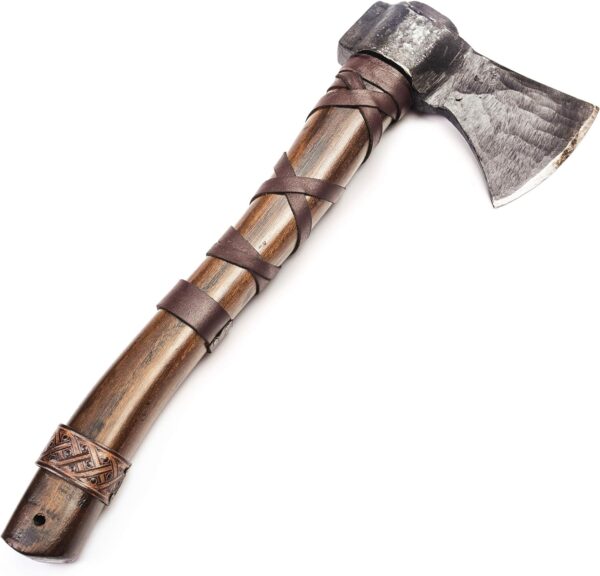
Viking blacksmiths employed sophisticated techniques to create durable and effective axes. They used a method called pattern welding, which involved twisting and forging together different types of iron to create a strong, flexible blade.
The primary materials for axe production were iron and steel. The blades were often made of iron with a steel edge welded on for sharpness and durability. Handles were typically crafted from wood, such as ash or oak, known for their strength and resilience.
High-quality Viking axes were sometimes decorated with intricate carvings and inlays, reflecting the owner’s status and wealth. These decorations could include runes, animal motifs, and other symbolic designs that held cultural and spiritual significance.
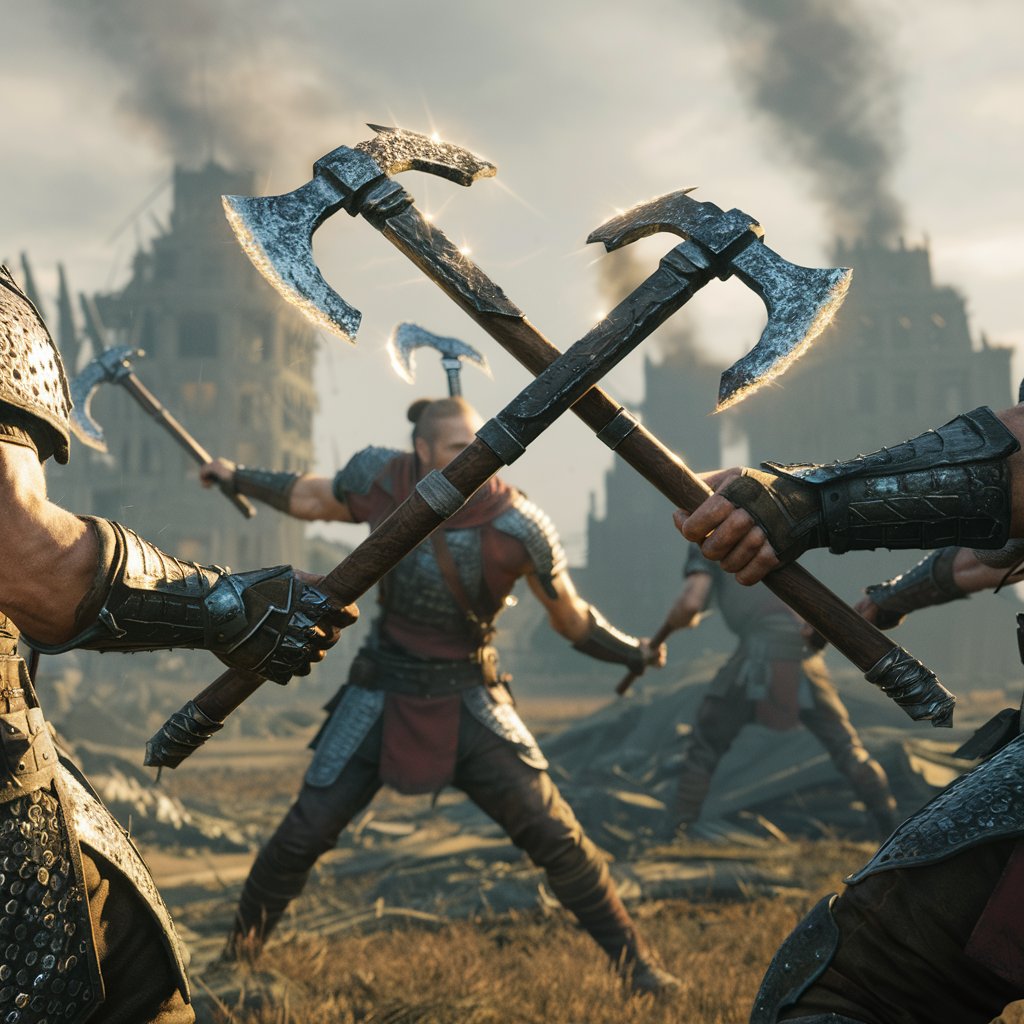
In battle, axes were used to kill opponents and break through defenses. The versatility of the ax allowed it to be effective in a variety of combat situations, from one-on-one combat to large-scale engagements.
The Viking axe was used prominently in many famous Viking battles, such as the Battle of Stamford Bridge in 1066. Legendary warriors like Eagle Skallagrimsson and Harald Hardrada were known for their skill with the axe, which contributed to their fearsome reputation.
Compared to other contemporary weapons, such as swords and spears, the axe was more accessible and easier to produce. Its effectiveness and versatility made it a staple in the Viking warrior’s arsenal, often preferred over other weapons for its practicality in both combat and everyday use.
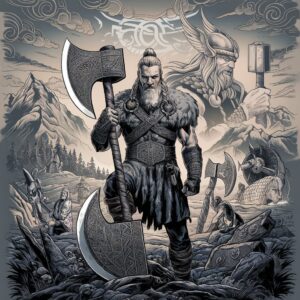
In Norse mythology, axes held significant symbolic meaning. They were associated with gods like Thor, who wielded the mighty hammer Mjölnir, a weapon with axe-like qualities. Axes represented strength, protection, and the warrior spirit.
Axes frequently appeared in Viking art and artifacts, including carvings, jewelry, and burial goods. These depictions not only highlighted the weapon’s importance but also conveyed cultural values and beliefs.
Viking Axes played a role in various rituals and ceremonies, including funerary practices. High-status individuals were often buried with their weapons, including axes, to signify their warrior status and to equip them for the afterlife.
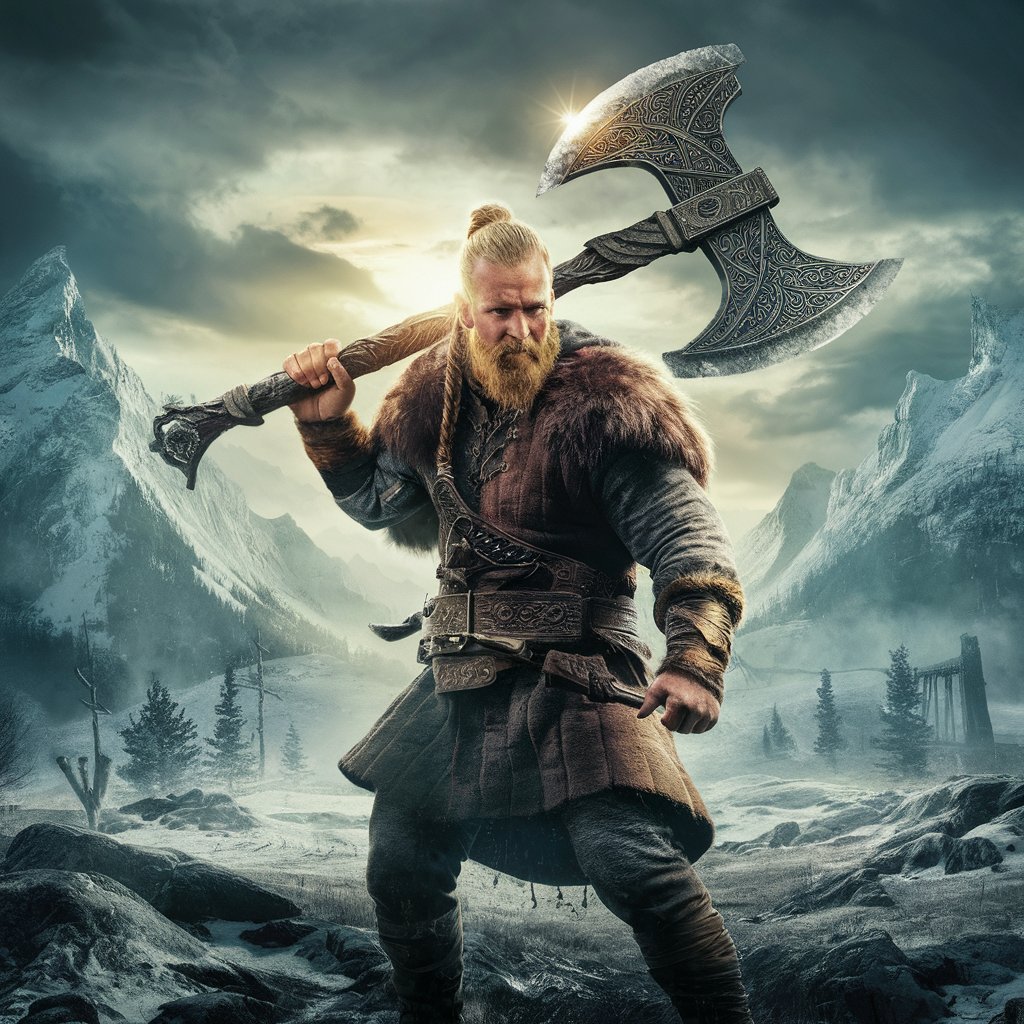
The design of Viking axes inspired the development of later medieval weapons. Elements of the bearded ax and the dane awl may be visible within the evolution of polearms and different battle axes used in later centuries.
Viking axes and their symbol have become iconic symbols in modern media, appearing in movies, TV shows, and video games. Series like “Vikings” and “The Last Kingdom” showcase the axe’s role in Viking warfare and culture, cementing its place in the popular imagination.
Historians and reenactors are deeply interested in Viking axes, studying their construction, use and historical context. Reenactment groups often focus on accurately recreating Viking combat techniques, including the use of axes, to better understand and preserve this aspect of Viking heritage.
Compared to other contemporary weapons, such as swords and spears, the Viking axe was more accessible and easier to produce. Its effectiveness and versatility made it a staple in the Viking warrior’s arsenal, often preferred over other weapons for its practicality in both combat and everyday use.